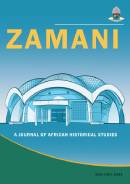Health Infrastructure Planning in Tanzania, 1961-1980s: The problems of future-making
Keywords:
Health planning, health infrastructure, health education, postcolonial, SAPs, TanzaniaAbstract
Between 1961 and 1978, Tanzania invested significantly in the health service provision – from training requisite manpower, provision of health education to building the necessary infrastructure in order to improve health conditions of the population. As existing research indicates, the investment paid off considerably in qualitative terms, for instance, with a gradual increase in life expectancy and a decline in infant mortality. This paper examines the vision of the state of health in Tanzania by using the prism of infrastructure. Its focus is on direct and indirect physical infrastructures, particularly medical buildings and facilities. Through the analysis of archival and documentary sources, the paper contends that the vision of the state on health centred on provision of primary healthcare in the rural areas without paying enough attention to the broader population dynamics and critical health challenges. This set the antecedents for crisis in the health sector that unfolded in the neoliberal era, particularly in the 1980s. The latter position challenges the long-established narrative in neoliberal and health policies’ literature that infers that health conditions started deteriorating in the postcolonial era due to neoliberal policies. As such, the paper presents a comparative juxtaposition of socialist and early neoliberal health infrastructures in Tanzania and contributes to knowledge on the futures of public health in the Global South. It concludes by arguing that although the policy of rural health improvement was translated through construction of primary health infrastructure, the latter acted as a denial tool for the best healthcare infrastructure to rural populations.
Downloads
Published
How to Cite
Issue
Section
License
Copyright (c) 2024 Zamani: A Journal of African Historical Studies

This work is licensed under a Creative Commons Attribution-NonCommercial-ShareAlike 4.0 International License.
Once published, the author handles the rights to the journal. The author will be asked to sign a form consenting transfer of rights to Zamani Journal.

